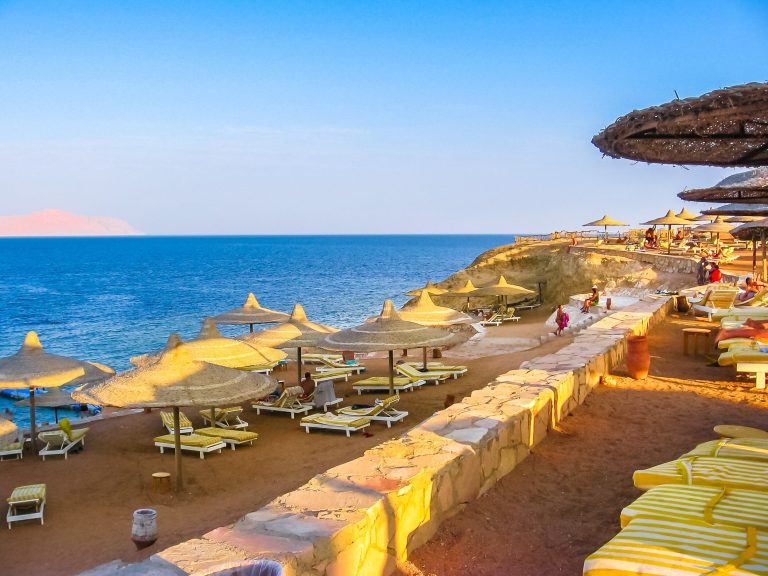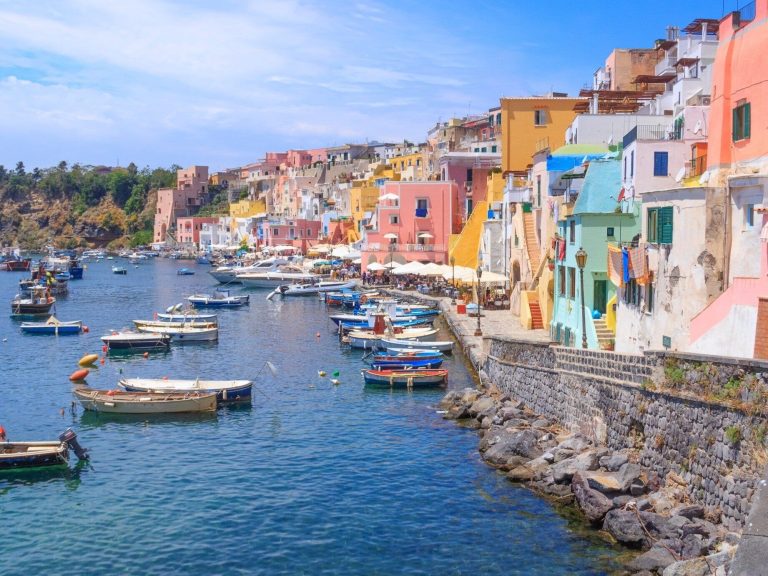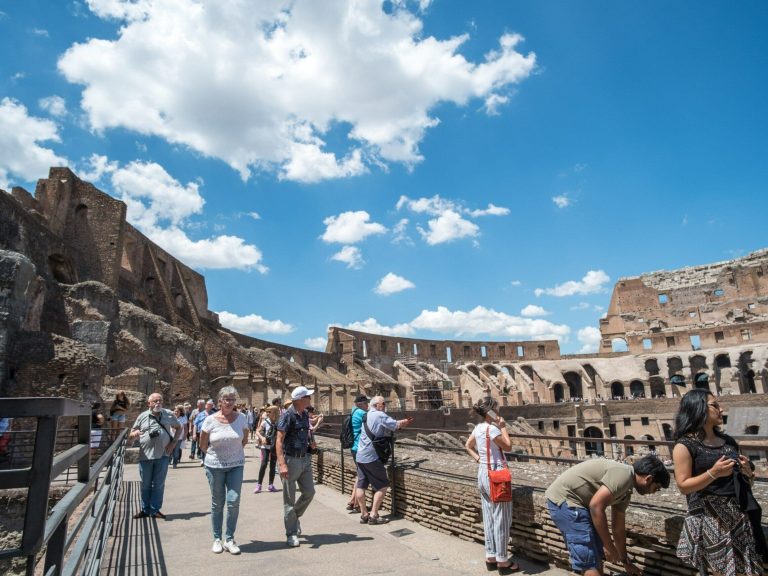Watching whales and dolphins in the wild. “If they swim towards us, it will be great fun.”

Tourist cruises to the natural habitats of cetaceans, including: dolphins and whales are already an element of mass tourism. What is whale watching and how to choose a cruise so as not to harm the animals?
Scientists and animal activists have been criticizing the point of existence of marine amusement parks for a long time, including: dolphinariums. We have already written in “Wprost” that the enslavement of cetaceans has negative consequences for their mental state and life expectancy. Nowadays, tourists can enjoy more ethical entertainment that takes into account animal welfare. Contrary to appearances, the price differences are not huge. For comparison, a ticket for an adult to a show at an entertainment dolphinarium in Europe costs approximately PLN 138. For the same price, you can buy a whale watching cruise in Madeira, Portugal.
Observing cetaceans in the wild. What rules are worth following?
In English, observing cetaceans (including dolphins and whales) is called whale watching. The term applies to both scientific and entertainment purposes. Before we move on to the proposals for commercial trips, it is worth emphasizing that this entertainment has important ethical aspects.
– Whale watching is an extremely lucrative and developing business, and any form of mass tourism is a potential or specific threat to the natural environment. In Tenerife alone, 700,000 people use this attraction every year. tourists, probably tens of thousands of them Poles – says zoopsychologist Jakub Banasiak, who promotes conscious whale watching in opposition to dolphinariums.
The most serious risks associated with cruises are: a collision of the boat with an animal and causing stress to them.
“Few people realize that animals rarely find enough food in the ocean. Dolphins spend energy searching for it for themselves and to be able to feed their young with the right amount of milk. If we stress them out by chasing them for a good photo, they waste it avoiding the boat and escaping. There will be less energy for searching for food and caring for the young. A very important element is also the lowest possible noise pollution. When we talk about killer whales, large noise drowns out their natural communications. Then they have problems with communication during hunting. The most dangerous situation is when the noise of the boat drowns out the communication between mother and calf.”
Legal regulations regarding such cruises are not uniform. –In Spain, especially in parts of the Canary Islands, there are government regulations that result from strict ministry regulations. Croatia has good practices in this area. They come from centers that study wild dolphin populations, but I don’t know if there are strict regulations regulating whale watching in this country. Outside Europe, the United States is very strict about this. There are also poor countries, such as Panama and Laos, that do not regulate it at all and the law comes last, says Banasiak.
The zoopsychologist lists several rules that will allow readers of “Wprost” to choose a commercial cruise in accordance with the guidelines of organizations protecting the rights of cetaceans, including: World Cetacean Alliance.
- Using only certified boats. – Most often, they follow government rules or scientific guidelines because they may lose their certification. It costs money, and losing it may mean the end of the business. In Spain, certified boats can be identified by a yellow flag with dolphins in the middle (somewhat confusingly called Blue Flag – Barco Azul). There is information about certified boats in every port. In other countries, the emblems are different, but they can be found with a minimum of involvement, he explains.
- Small boats. – I am a supporter of them, although I understand that families with children feel safer in larger rooms. The owners of small vessels are often enthusiasts devoted to the sea and its protection. They may be more expensive, but they offer other attractions. We are then close to the water surface. When animals decide to swim, they are up to a meter away from us. It’s great fun, he adds. – If skippers care about the environment, the engines are electric. They are quieter and pollute the water less with noise. Such boats often have hydrophones on board, thanks to which we can listen to the underwater sounds of whales and dolphins, and also see for ourselves how much they are drowned out by the engines of approaching other ships.
- A skipper associated with the scientific community or cetacean protection organizations. – It is worth choosing such a boat because the value of the educational information provided during the cruise is greater – he says.
- Engine screw cover. – You can ask about it, but it’s worth being a “wisely annoying” tourist. Not all boats need to have it if the skipper is experienced and has spent his life at sea. This is quite important, because I have often seen dolphins injured by the propellers of tourists’ motorboats or large ships, and in one of the reserves in Panama, 10 out of 250 dolphins there died of such wounds – notes Jakub Banasiak.
It is equally important that a given whale watching operator follows the recommendations protecting the welfare and safety of dolphins and whales. First of all, it’s about:
- Distance from animals. – The closest you can get to a dolphin is 50 meters. If they come to the boat on their own because they are curious, that is their choice. Moreover, bottlenose dolphins, and sometimes common and striped dolphins, like to ride on the bow wave of our boat, even 0.5 meters from the ship. It’s safe for animals and compliant with regulations, says the expert. – You cannot swim closer than 100 meters to a whale, unless it swims itself. It’s wonderful when whales come to us with a calf, although we don’t know why they do it. In Mexico I saw that gray whales allowed themselves to be petted. In my opinion it shouldn’t be like that, but they didn’t seem to have a problem with it. The strictest rule applies to a young dolphin or whale calf. We don’t get closer than 300 meters to it. Scaring off an inexperienced or stressed mother could result in the mother abandoning the cub. This means a death sentence for the lonely calf, he explains.
- Staying the right course. – We do not go on a collision course, we do not swim around and surround the animals in several boats. Sometimes regulations allow a maximum of three boats to stay near a group of animals, says the zoopsychologist. Below is an example of inappropriate swimming towards a group of dolphins.
- Observation time – the conventional time spent with animals is about 20 minutes, but it depends on their behavior
Where to observe dolphins and whales? Sample directions
Dolphins inhabit oceans and seas in many corners of the world. It is worth remembering that observing animals in nature is always accompanied by an element of uncertainty. Will the whales get close enough to be seen? Or maybe you won’t be able to meet them at all? The latter is possible and it is worth respecting it. Some organizers protect themselves against this eventuality. “If you do not see any wildlife during the trip, we will offer you the opportunity to go on another one for free,” says one of the companies organizing whale watching on the coast of Madeira.
Croatia
One of Poles’ favorite holiday destinations is Croatia. A trip to the Adriatic Sea is an opportunity to expand your knowledge about cetaceans.
Tourist cruises are offered by, among others: Blue World Ltd., owner of an institute working to protect the marine environment in the Adriatic Sea. The trip begins with a short lecture at the Maritime Education Center on the island of Lošinj. The boat then goes out to sea to meet bottlenose dolphins. The length of the trip depends on the waiting time for the group of mammals. “We will stay with the animals for a maximum of 30 minutes. However, let us not forget that the dolphins we will meet are wild animals and their behavior will show us when we have overdone our visit,” we read on the website.
Dolphin watching in high season costs EUR 60 (approx. PLN 275), and a ticket for a child under 14 costs EUR 50 (approx. PLN 230). The offer also includes a family ticket.
A similar attraction is offered by Sveti Ivan Dolphin Excursions. I became interested in her leaflet in the Croatian town of Nin in northern Dalmatia. The tour starts at 8:30. The small unit Sv. Ivan II takes a maximum of 23 people and swims to the vicinity of a group of dolphins. Additionally, near the island of Molat, tourists can choose from swimming in the sea, diving or sightseeing. The tour ends at 2:30 p.m. Cost: 60 euros for an adult (approx. PLN 275), 40 euros for a child (approx. PLN 183).
Madeira
Among the companies offering whale watching tours in Madeira is Magic Dolphin, which clearly states on its website that tourists will not swim with dolphins because they are wild animals and it is not good for them or safe for people. If neither dolphins nor whales are seen during the cruise, the organizer will offer a ticket at a promotional price of 10 euros for another trip. The cost of a three-hour cruise for a person from 12 years of age is EUR 30 (approximately PLN 137).
Tenerife
The White Tenerife travel agency in Tenerife prides itself on ethical whale watching. The Atlantic cruise begins in a port on the southwest coast of the island. “We were lucky to see dolphins, pilot whales and even a turtle, all in their natural habitat, as it should be,” tourist Elisabeth reviewed the trip. Participants can choose a three- or five-hour cruise. The cost of the shorter one is approximately PLN 182.
Without a scientific background, how can one distinguish between “mass entertainment” and ethical observation? I asked Klaudia about this, as she is very interested in cetaceans and looks for opportunities to observe them during each trip. Klaudia took part in both a trip, which she called a tourist “mass tour”, and a very intimate whale observation. The experiences were radically different.
– I came across a “mass party” on the Spanish Gran Canaria, but I understood it only when I got on a colorful boat with a glass bottom. The organizer gave 100 percent. guaranteed dolphin sightings, but we didn’t see any. They were supposedly supposed to track them with sonar, but apparently it was a lure for tourists. If they had something like that, they would probably find it, he recalls. “Places where animals are worshiped are something completely different,” he says.
As an example of a great experience, he cites Madeira and a cruise with the VMT Madeira agency.
– When boarding, we were given leaflets on what ethical cetacean observation should look like. The organizer said that the crew worked scientifically and observed animals as an internship, although I did not verify this. You couldn’t swim straight up to the dolphins to avoid colliding with them. The observation lasted 5-10 minutes and then we sailed away. Only then could another group approach so that the dolphins would not suddenly be surrounded by several boats – he says.
Another positive experience was observing whales in Monterey Bay, California.
– Yes, the place is famous for whale watching, you will find whale mascots and magnets there. Even though many people from all over the United States come there to see the whales, it is clear that everyone loves animals and wants their comfort. The observation was short but pleasant, I saw killer whales and blue whales. Even if you notice a tail from a distance or a whale jumps out of the water for two seconds, it’s a cool experience, says Klaudia.
The tourist advises that when choosing a trip, based on preliminary research and impressions, also before boarding. – It seems to me that whale watching cannot be ethical in places of mass tourism. When I see cotton candy, balloons and neon lights, I don’t expect high standards – he says.
To sum up: looking for certificates, asking specific questions to the organizers and showing respect for animals – this is a good introduction to booking a tourist cruise and getting to know marine mammals as they are, and not as they became after undergoing training that forced them to perform tricks.






